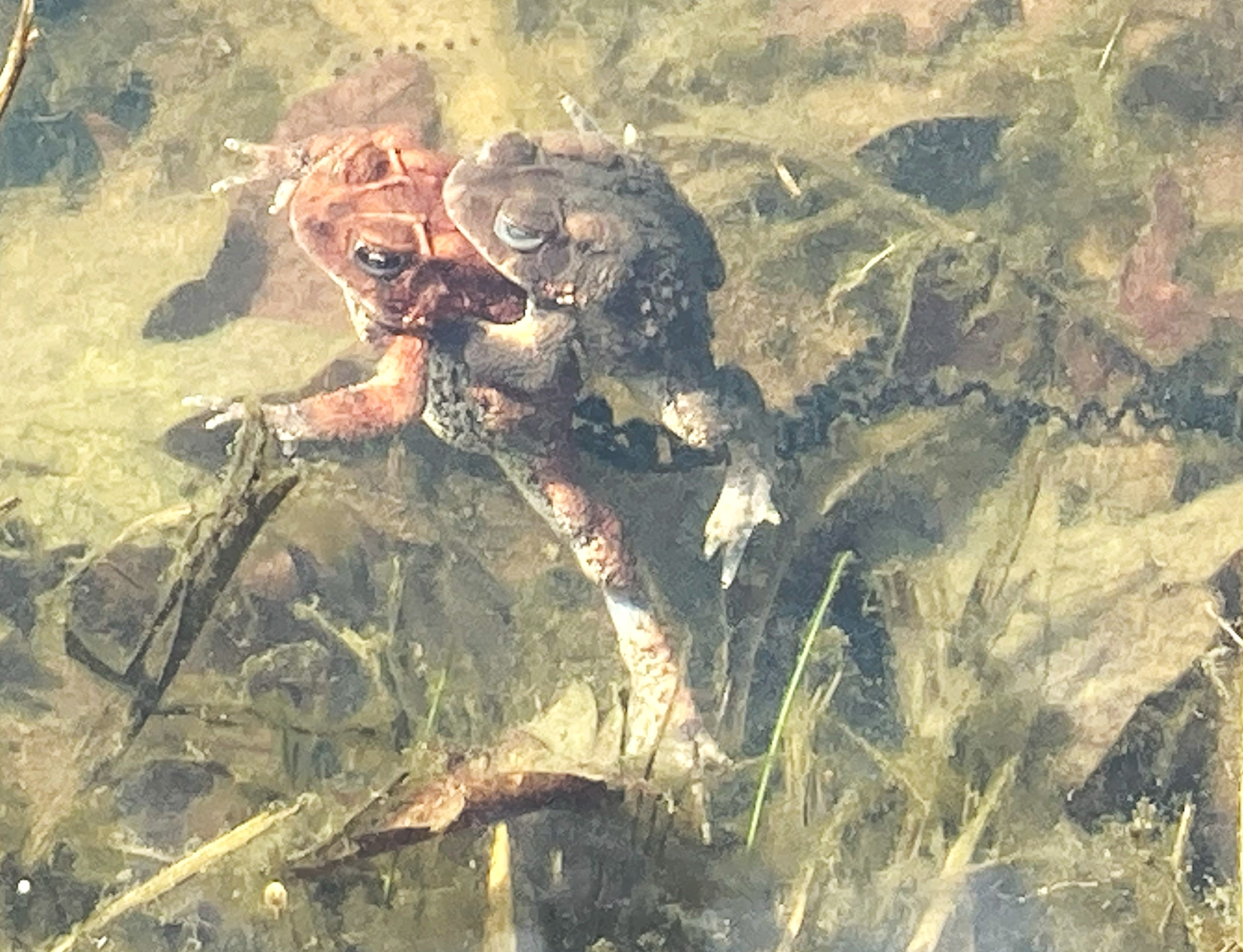Toad Lust
Contact
University of Arkansas System Division of Agriculture
Cooperative Extension Service
2301 S. University Ave.
Little Rock, AR 72204

Toad Lust
I missed it, but everyone who was there that day a couple of years ago talks of the toad breeding frenzy. It became one of those never-to-be-forgotten moments when Mother Nature lifts the veil and shows you something remarkable. The toad breeding episode in early April of this year was more modest, with just a few dozen toads doing their thing, but it was still remarkable. So, let us consider toads.
Toads are amphibians — those cold-blooded animals that are considered the first four-legged creatures to walk upon the land about 360 million years ago. They, like humans, are thought to have evolved from fish.
Toads are, of course, closely related to frogs. Worldwide, there are 6,000 species of frogs, but only 300 kinds of toads. The main differentiating features between frogs and toads are: 1) smooth and slimy skin in frogs, not warty; 2) long hind legs in frogs for jumping; 3) bulging top-of-head mounted eyes for toads; and 4) frogs mostly have a near-water lifestyle while toads can live farther from wet places.
About 150 new species of frogs have been described annually since 2000. Interestingly, while DNA studies and gene mapping have exploded in warm-blooded biology to assess biological relationships and evolutionary trends, only 20 species of amphibians have been mapped, so genomics has little to say about the life history of toads and frogs.
There are 23 kinds of frogs and six toads native to Arkansas. Of the true toads, the Eastern American Toad is the most common. It is usually two to three inches long and a blotchy brown, gray, olive or dull red in color. It is well-warted — the one our mothers warned us against picking up. In captivity, large females have been known to live as long as 30 years, but in the wild, lifespans average six years or so.
Most amphibians, including toads, exhibit a trait known as “breeding site fidelity,” and like salmon, return to the place they hatched for breeding. Because many siblings would also return to the same pond, toads can identify the distinctive croaking pattern of their kin, thus helping ensure outcrossing once the breeding frenzy starts. And when it starts, it is a frenzy.
Egg laying takes place in ponds and streams in early spring. Female toads are larger than the males of the species, but the males have specialized hooks on their forelegs to help them hang on for the ride. The female releases thousands of black eggs in a dual strand that coils like a screen-door spring while the mounted male does the fertilization. In the frenzy, it is not uncommon for two or more males to sometimes attach to a female. Females are sometimes drowned in the frenzy, unable to break free to swim to the surface for air. Frogs produce their eggs in a large entangled mass.
Depending on water temperature, the eggs hatch in three to 12 days. The resultant black tadpole seems smaller than frogs and with a more slender tail (at least it seems to me, who has no credentials at identifying amphibian larvae). To avoid being eaten the tadpoles stay close to shore in the shallow water.
Some claim the tadpoles are poisonous, providing a natural deterrent to any hungry fish in the area. I’m skeptical of this, because I know for sure there are some dumb fish in the pond, yet I’ve found none floating belly up.
The migration of the toadlets to dry land takes about a month. The small toads find moist places under leaves, around rock piles and other such places where they can pick off the spiders, slugs, worms, moths and other slow creatures that make up their diet. In turn, they may be eaten by snakes, birds (crows, egrets, ducks) and foxes. Dogs find them disagreeable because they produce a toxin that Fido finds disgusting.
Will they cause warts? Having handled a fair number of toads gathered beneath the yard light as they scurried about catching June bugs, I always suspected my mother was just repeating old folk tales. Turns out I was right. Human warts are caused by a transmissible virus, but the warts on a toad are caused by the genomics of the creature, not a foreign virus. However, I was never brave enough to kiss a toad, so the jury is still out on the benefits of a big smooch.
